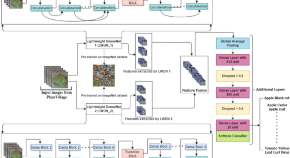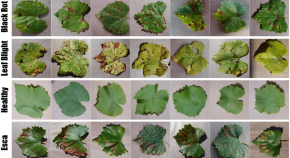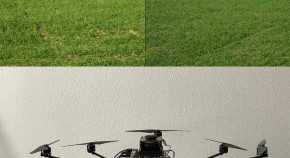
Collection
Implementing machine learning in plant protection
- Submission status
- Open
- Open for submission from
- 30 April 2024
- Submission deadline
- Ongoing
Machine learning (ML) represents a valuable tool across various facets of plant protection, offering innovative solutions for monitoring, detection, and decision-making. In this collection of articles, we invite submissions that illustrate how machine learning can be applied to enhance plant protection:
Disease Detection and Diagnosis: ML algorithms can analyze extensive datasets of plant images to identify early signs of diseases or infections. Image recognition models can pinpoint patterns and symptoms linked to specific plant diseases, enabling farmers to swiftly respond with targeted treatments or removal of affected plants.
Pest Identification and Monitoring: ML techniques can develop models for identifying pests based on images or sensor data. Automated pest monitoring systems can detect and quantify pest populations, facilitating timely interventions. Drones equipped with ML algorithms can survey vast agricultural areas and pinpoint pest infestations.
Predictive Modeling for Pest and Disease Outbreaks: ML models can assess historical data on weather patterns, crop health, and pest/disease occurrences to forecast future outbreaks. Predictive analytics can aid farmers in planning preventive measures and optimizing resource allocation.
Precision Agriculture: ML algorithms can analyze diverse data sources like satellite imagery, soil moisture levels, and weather conditions to refine farming practices. Precision agriculture techniques guided by machine learning enable targeted resource applications (e.g., water, fertilizers, pesticides), reducing waste and environmental impact.
Weed Detection and Management: ML models can differentiate between crops and weeds in images, allowing for precise herbicide application. Autonomous or semi-autonomous robotic systems with ML capabilities can target and eliminate weeds, thereby decreasing reliance on broad-spectrum herbicides.
Optimizing Pesticide Application: ML algorithms can assess factors such as weather conditions, crop growth stages, and pest prevalence to optimize pesticide timing and dosage. This approach minimizes pesticide use while maximizing effectiveness.
Disease Resistance Prediction and Breeding: ML can analyze genetic data to predict plant variety resistance to specific diseases, guiding efforts in plant breeding to develop crops with enhanced pest and disease resistance.
Smart Sensor Networks: ML algorithms can process real-time data from sensor networks monitoring environmental conditions, crop health, and pest activity. Smart sensor networks offer early warnings and enable swift responses to changing conditions.
Decision Support Systems: ML-driven decision support systems can integrate data from multiple sources to furnish farmers with actionable insights.
We welcome submissions of ready-to-use developments. It is important that the efficiency of new algorithms is tested and compared using publicly available data following the FAIR principles. This ensures that the research outcomes are Findable, Accessible, Interoperable, and Reusable, which promotes transparency and reproducibility in scientific research. Submissions should include detailed descriptions of the methods used for testing and comparing algorithm efficiency, along with references to the specific publicly available datasets utilized.
Articles (7 in this collection)
-

-
Advancements in deep learning for accurate classification of grape leaves and diagnosis of grape diseases
Authors
- Ismail Kunduracioglu
- Ishak Pacal
- Content type: Original Article
- Open Access
- Published: 26 March 2024
- Pages: 1061 - 1080

-
A novel probabilistic intermittent neural network (PINN) and artificial jelly fish optimization (AJFO)-based plant leaf disease detection system
Authors
- E. Saraswathi
- J. Faritha Banu
- Content type: Original Article
- Published: 20 February 2024
- Pages: 587 - 600

-
Detecting urban tree canopy using convolutional neural networks with aerial images and LiDAR data
Authors
- Hossein Ghiasvand Nanji
- Content type: Original Article
- Published: 13 February 2024
- Pages: 571 - 585

-
Classification and identification of crop disease based on depthwise separable group convolution and feature fusion
Authors (first, second and last of 5)
- Qiuping Wang
- Chenrui Liu
- Hong Men
- Content type: Original Article
- Published: 25 November 2023
- Pages: 601 - 615

-
A comparative analysis of deep learning methods for weed classification of high-resolution UAV images
Authors
- Pendar Alirezazadeh
- Michael Schirrmann
- Frieder Stolzenburg
- Content type: Short Communication
- Open Access
- Published: 16 October 2023
- Pages: 227 - 236

-
Detection method for tea leaf blight in natural scene images based on lightweight and efficient LC3Net model
Authors (first, second and last of 5)
- Yongcheng Jiang
- Libing Lu
- Yan Zhang
- Content type: Original Article
- Published: 08 October 2023
- Pages: 209 - 225


